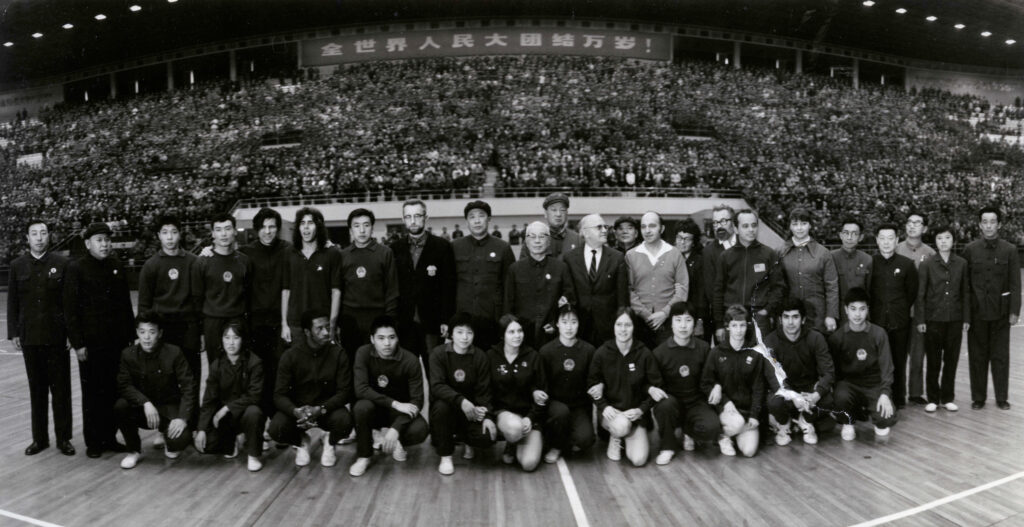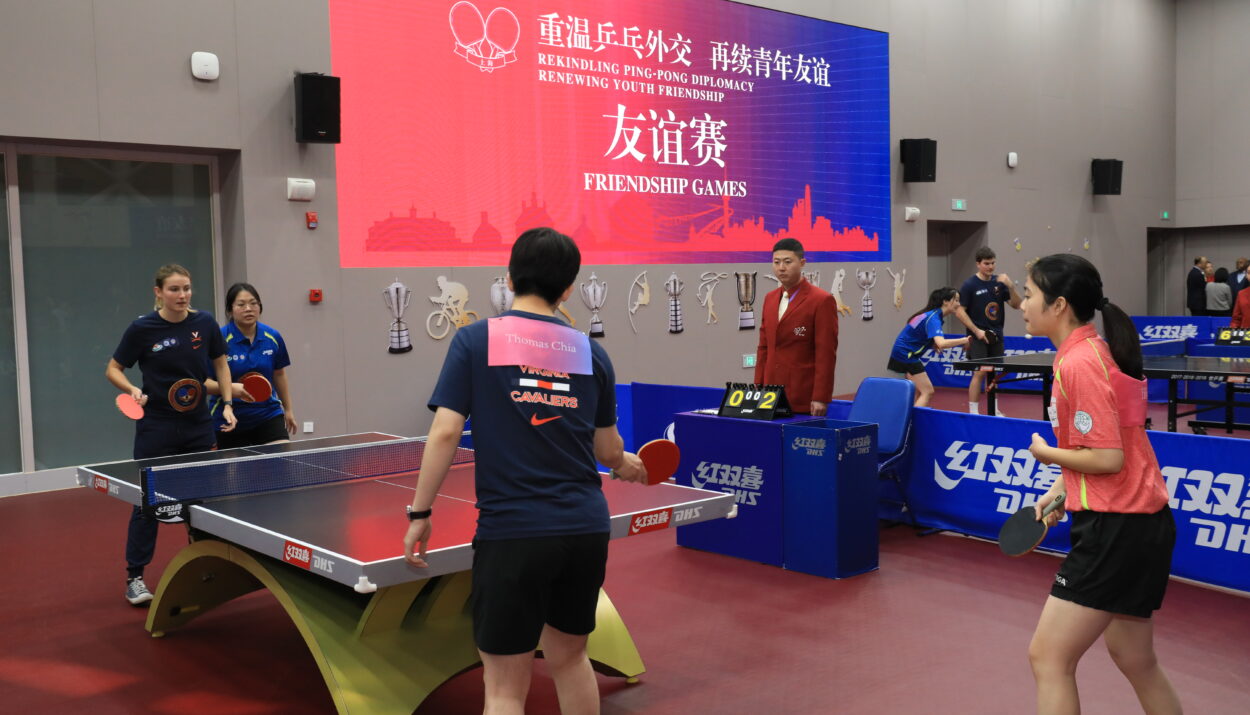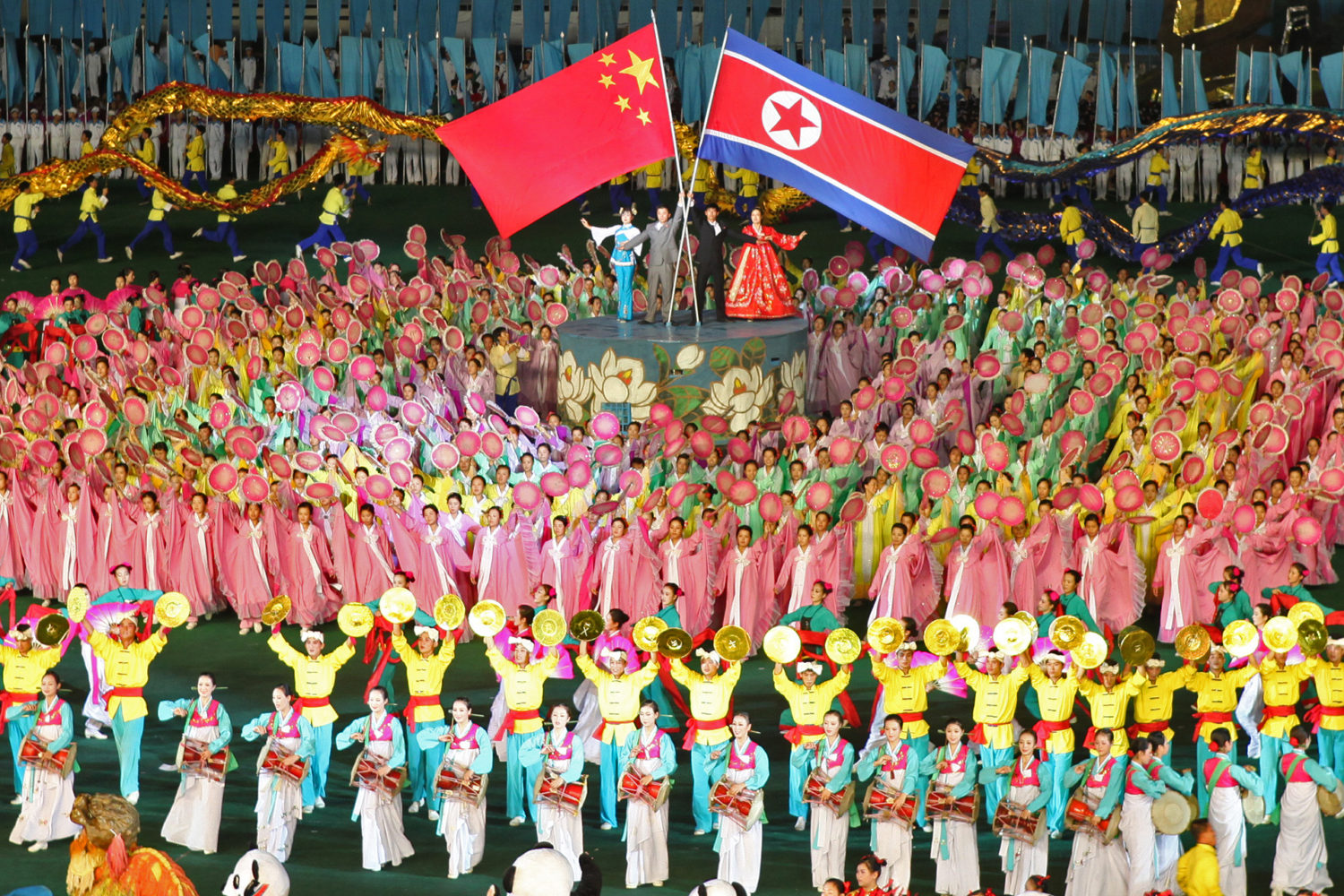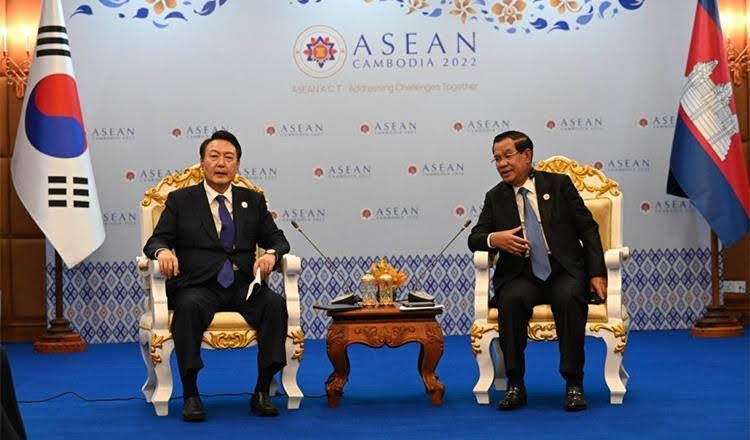
The US and Chinese Table Tennis Team pose for a photo during the US team’s visit to China in April 1971.
Source: The US National Museum of American Diplomacy
The period between the 1960s and the early 1970s was not a favorable time for relations between Beijing and Washington. The US and China just had a proxy confrontation during the Korean War and were still clouded by Cold War propaganda. Moreover, during the 1960s and the early 1970s, the US government did not offer official recognition to the People’s Republic of China (PRC) – instead, recognizing the Republic of China (Taiwan) as the legitimate government of China. Diplomacy was tense and it did not appear that the relationship between the two countries would be getting better.
Despite their decades of entanglement, the China–USSR border issue catalysed the need for rapprochement between Beijing and Washington. But how did Ping Pong come into play for the US and China relations?
How it all began
In 1971, during the 31st World Table Tennis Championship in Japan, the American team was invited by the PRC to the game. The Chinese were the ones to invite the US team, instead of the host, Japan, because Beijing needed to ensure it was seen as a genuine effort to re-establish diplomatic connections with Washington. Moreover, Japan, at this time, chose to act as a mediator instead of dealing directly with the US–China matters.
During this time, it was believed that the Chinese players were under a strict rule by the PRC not to engage with the Americans due to their governments’ ideological differences. However, the tides had turned on the tournament day, when American player Glenn Cowan got on the wrong shuttle bus full of Chinese ping-pong players. Through that, Glenn had a chance to meet with Chinese player Zhuang Zedong. The two players even exchanged gifts and had good conversations as well.
Once heard about this encounter, Chinese Chairman Mao Zedong took this opportunity to make it political by inviting the American team to China, with all expenses paid for by the Chinese government. The Americans accepted with surprise, as stated by former President Richard Nixon: “I had never expected that China’s initiative would come to fruition in the form of a ping-pong team.”
The American Table Tennis team arrived in China on 10 April 1971 and spent ten days touring through Guangzhou, Beijing, and Shanghai with great hospitality from the Chinese people and government. The team also played several ping-pong matches with their Chinese counterpart under the slogan “Friendship First and Competition Second.”
A year later, on 12 April 1972, the Chinese National Table Tennis Team visited the US and stayed until 30 April 1972. During their stay, the Chinese national team had a chance to visit many places such as the White House Garden, a horse farm in Memphis, a school in the Bronx, the governor’s mansion in Williamsburg, a winery in Napa Valley, and even the Empire State Building and Disneyland. Furthermore, they also played six matches with the US team – their stay was treated with the utmost courtesy by their US counterpart.
Reset and Re-march
After the trip, politics came into play rapidly. The allowance of the US team to visit China established a back-to-back channel between the US and China. And it was this communication channel that sealed the deal between Beijing and Washington to allow US National Security Adviser Henry Kissinger to pay a secret visit to Beijing in July 1971.
During the secret trip, Kissinger had successfully established direct communication channels at the highest level between the US and China, laying the groundwork for US President Richard Nixon’s visit in 1972.
The visit by Richard Nixon resulted in the establishment of the “Shanghai Communique” in 1972. This Communique stressed Washington’s recognition of the People’s Republic of China (PRC) as the sole government of China and the start of the “One-China Policy.”
The Ping-Pong Diplomacy 2.0

The players from the UVA and Fudan University played ping-pong in China.
Source: The Diplomat
It continued in the 1970s and after, as ping-pong was used by the US and Chinese government to sustain their communication through grim times. But what are those grim times?
Take the current setting for instance. The trade war, the chip war, the 5G rivalry, and COVID-19 are just a few examples of where there is strong divergence between Washington and Beijing at the moment.
Ping-pong diplomacy is said to have made a comeback when a group of American Table Tennis undergraduate students from the University of Virginia (UVA) visited China on 1 January 2024 to play friendly ping-pong matches with students from Tsinghua University, Fudan University, and Shanghai University of Sport.
Stephen Mull, the vice provost for Global Affairs for the University of Virginia, recapped that “I was just a kid, but I remember what a sensation it was for American ping-pong players to go to ‘Red China’ – a place that was just a complete and total mystery to Americans and with which we had no contact, really, at the time…So I thought, well, that worked before, maybe it will work again”.
Re-bond with Ping-pong
Back in the early 1970s, when China and the Soviet Union were at odds, Mao needed a chance to create a communicative and mutual understanding atmosphere to work with the United States to deter the USSR, but nothing was suitable for this task. The border dispute with the USSR was a buzz call for Beijing that it needed to diversify its outreach toward an actor that could both daunt the Soviet Union’s aggression and transmit China’s image to the Western world.
The meet-up between the American and the Chinese ping-pong team during the World Table Tennis Championship was exactly the opportunity Chairman Mao needed to carry out his agenda. This is also why Mao was swift to accept both Kissinger and Nixon’s approach to Beijing – to show the USSR that it had made a new friend, and this friend is the Soviet Union’s adversary.
And it worked beautifully in favor of the US and China in creating a back-channel for future discourse. The Ping-Pong Diplomacy could not have emerged if both China, under Mao Zedong, and the US, under the Nixon Administration, were concerned about appearing weak to pursue diplomatic engagement with one another instead of ending the existing Beijing-Washington turmoil.
Its revival, in 2024, meant that the sport has become a means of bonding between the two countries – a reminder that ping-pong was once a mechanism that reconnected China to the US. It helps to maintain a connection on the people-to-people level despite both governments’ contests in the Indo-Pacific, technology, trade, and economics.
However, in 2024, it is important to keep in mind that the comeback of this diplomacy did not stem from the government but from education; this has two implications. One, it means that the impact might not be as significant in resolving the US–China contest, by creating a back-channel like it did last time, as there was an absence of direct government involvement and high-level diplomatic relations. Two, it can also mean that Washington and Beijing’s people-to-people incentive for cooperation still exists, and both sides are waiting for the right moment to engage. So there is still a silver lining to rekindle their bilateral ties.
Despite that, it is demonstrable that this statecraft is a testament to the ability of sport to transcend states’ political division. This diplomacy offers a glimmer of hope in creating dialogue in challenging times. Sometimes, a game of table tennis is all it takes to remind both countries of the humanity they share, which could pave the path for a cooperative future.
- The Ping Pong Diplomacy - June 3, 2025
- The 4B Movement and Demographic Issue in South Korea - January 19, 2025
- South Korea’s Chip Industry and the Rising US-China Competition - December 3, 2024





